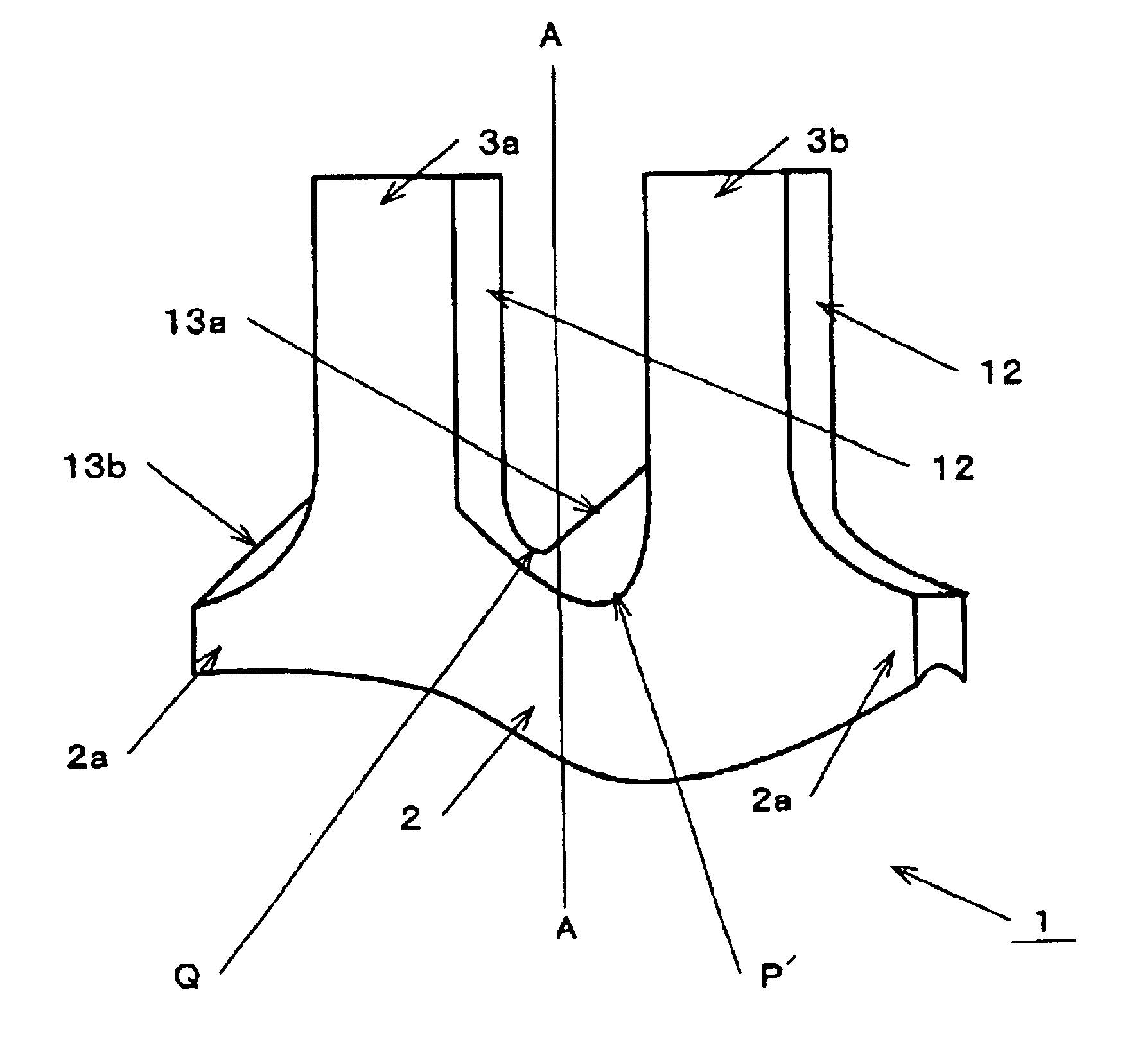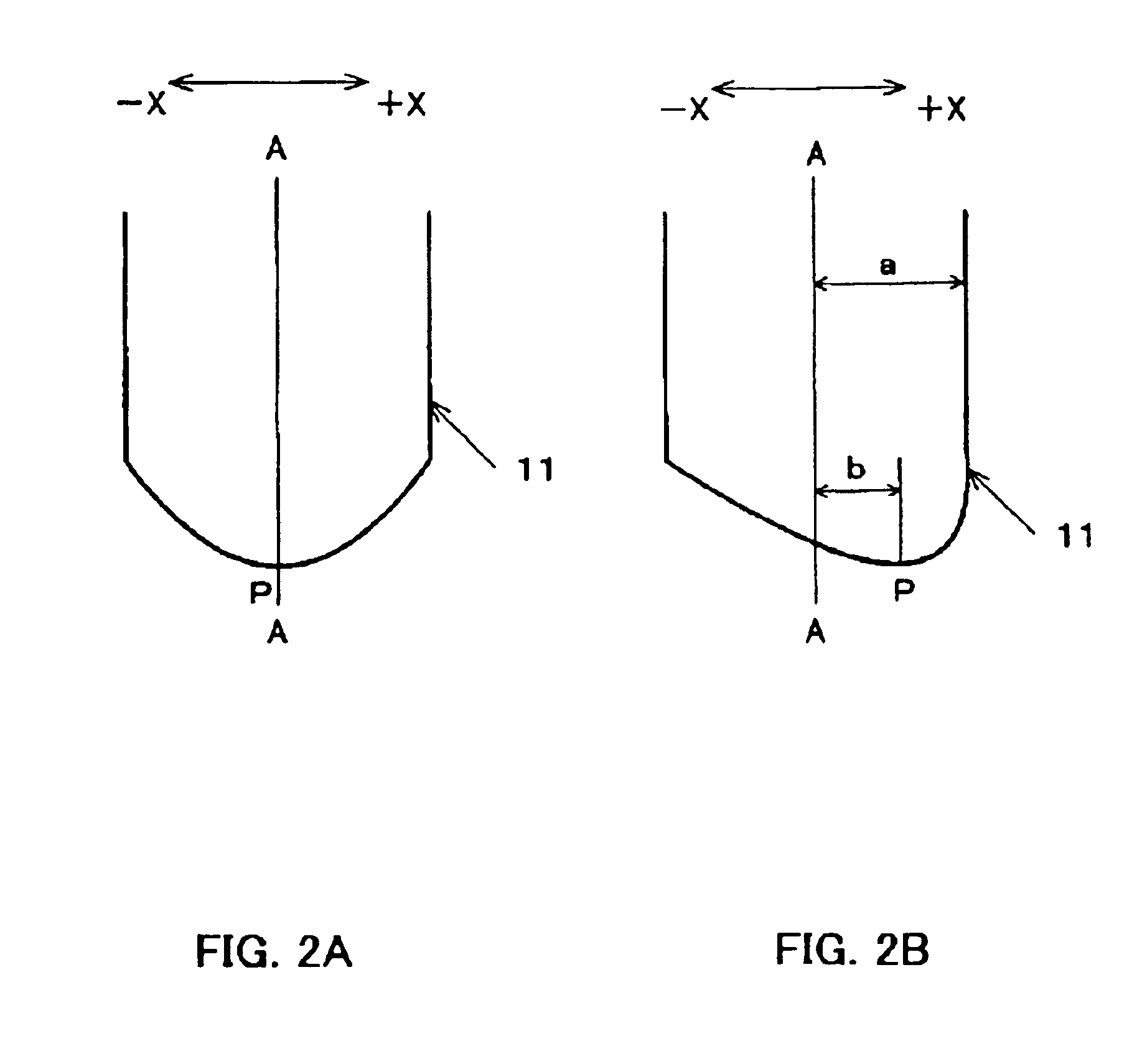Tuning fork-type crystal vibrator
a technology of tuning forks and crystals, applied in piezoelectric/electrostrictive devices, device material selection, device materials, etc., can solve the problems of not being able to achieve even smaller ci values or, in particular, better frequency change characteristics (electrical shock resistance) with regard to drops or impacts, and the support of tuning forks on the tuning forks is large, so as to achieve the effect of suppressing vibration leakage due to the pair of tuning fork arms
- Summary
- Abstract
- Description
- Claims
- Application Information
AI Technical Summary
Benefits of technology
Problems solved by technology
Method used
Image
Examples
embodiments
[0041]FIG. 1 is a diagram illustrating an embodiment of a tuning fork-type vibrator in accordance with the present invention. It should be noted that portions identical to the above-described conventional example are denoted by identical numerals and their further explanation has been omitted.
[0042]The tuning fork-type vibrator includes a tuning fork-shaped crystal element 1, formed by etching and made of a pair of tuning fork arms 3a and 3b having grooves 4 in both of their principal surfaces as described above, and a tuning fork base portion 2 that is wider than the pair of tuning fork arms 3a and 3b and that has two-level base protrusion portions 2a. Due to etching anisotropy, the tuning fork-shaped crystal element 1 has a first slanted portion 13a and a second slanted portion 13b rising from the −X direction to the +X direction in the tuning fork slit and on the slope of the base protrusion portion 2a on the −X side, respectively.
[0043]Here, the first slanted portion 13a of the ...
PUM
 Login to View More
Login to View More Abstract
Description
Claims
Application Information
 Login to View More
Login to View More - R&D
- Intellectual Property
- Life Sciences
- Materials
- Tech Scout
- Unparalleled Data Quality
- Higher Quality Content
- 60% Fewer Hallucinations
Browse by: Latest US Patents, China's latest patents, Technical Efficacy Thesaurus, Application Domain, Technology Topic, Popular Technical Reports.
© 2025 PatSnap. All rights reserved.Legal|Privacy policy|Modern Slavery Act Transparency Statement|Sitemap|About US| Contact US: help@patsnap.com



